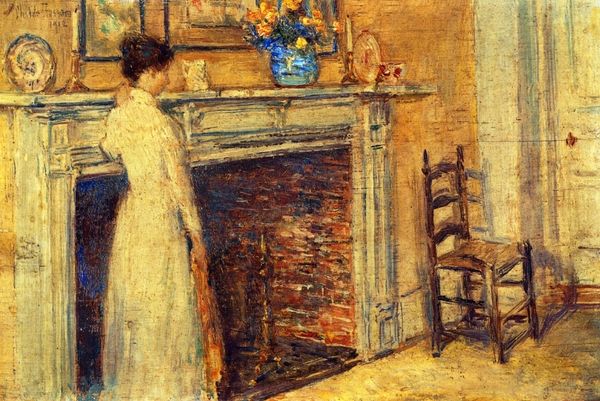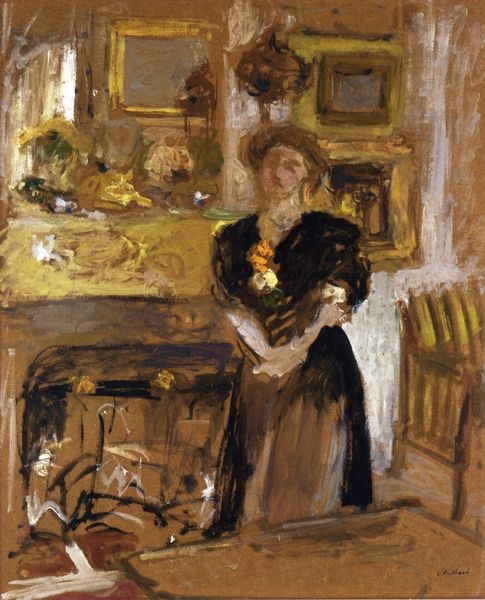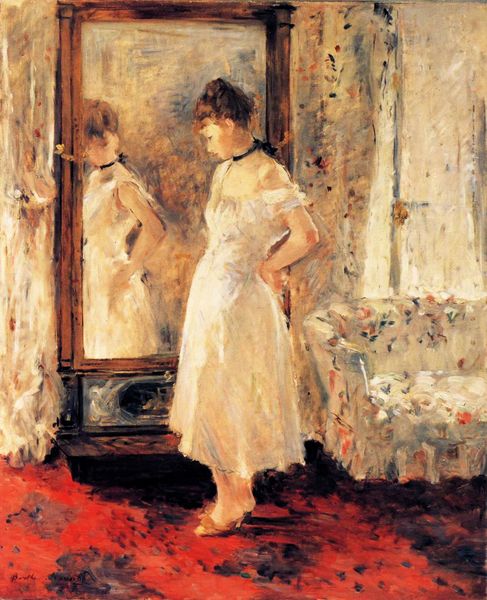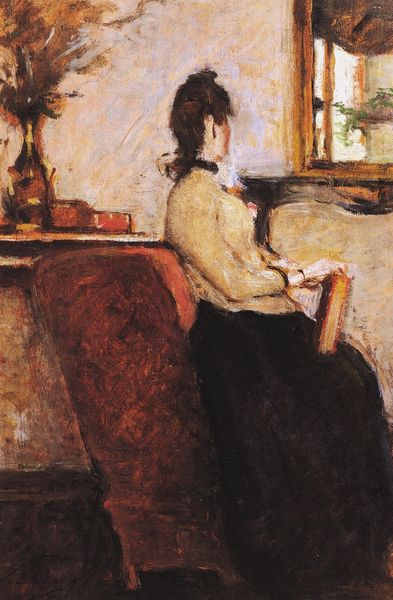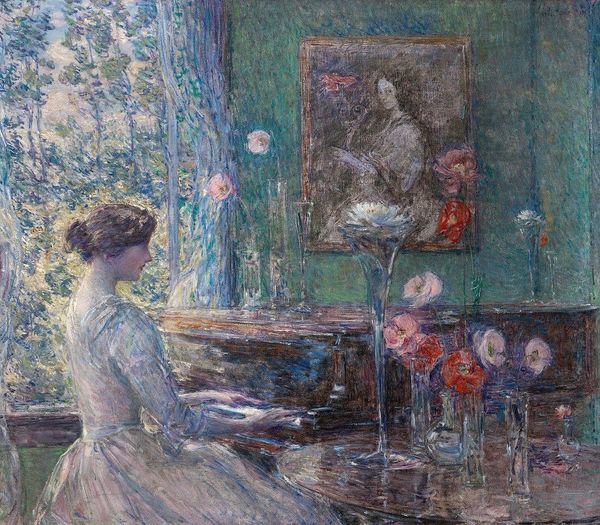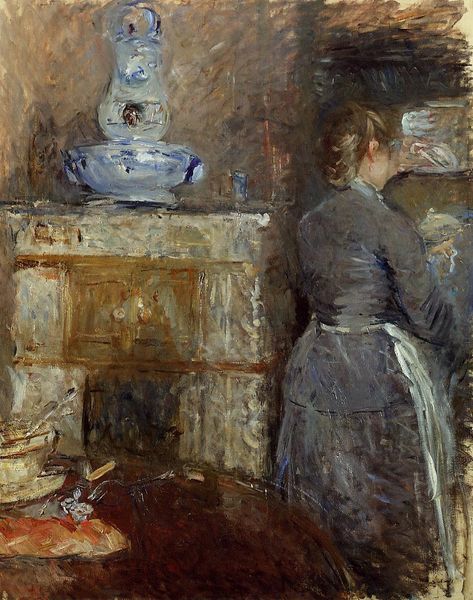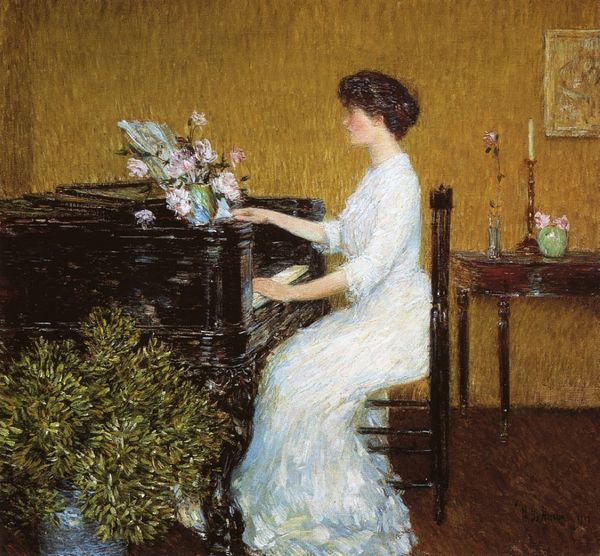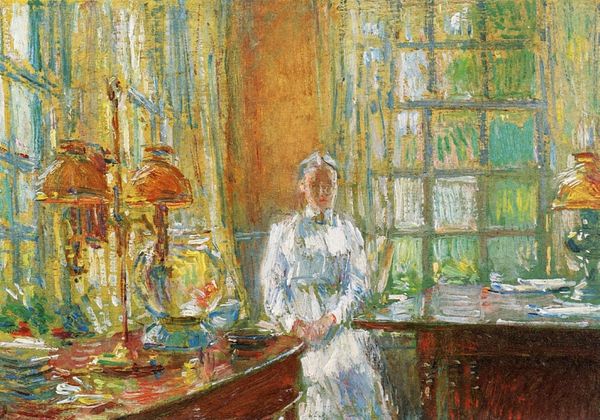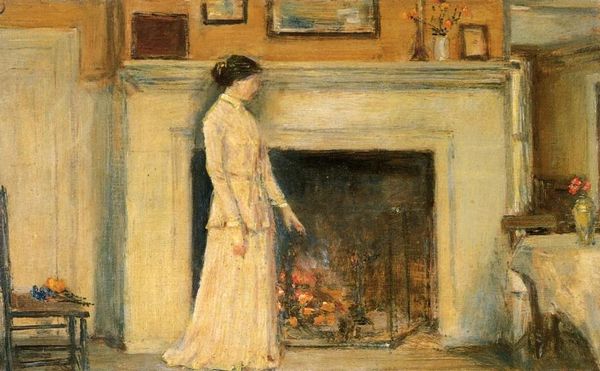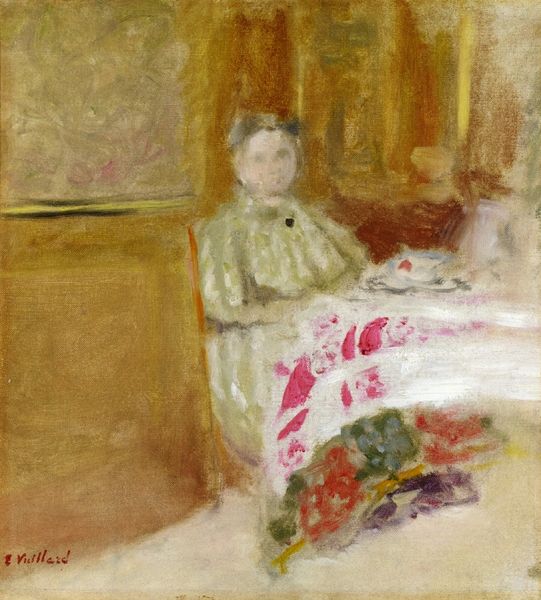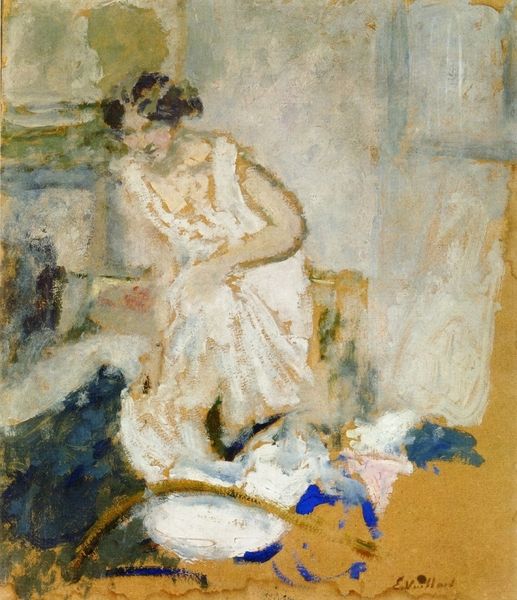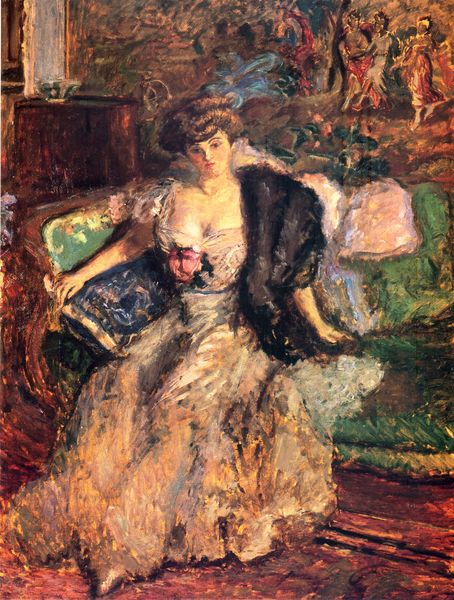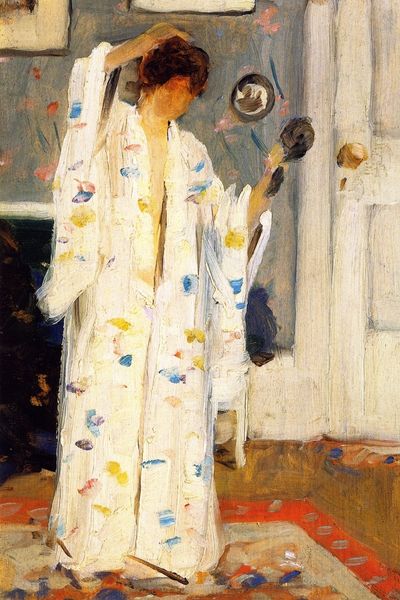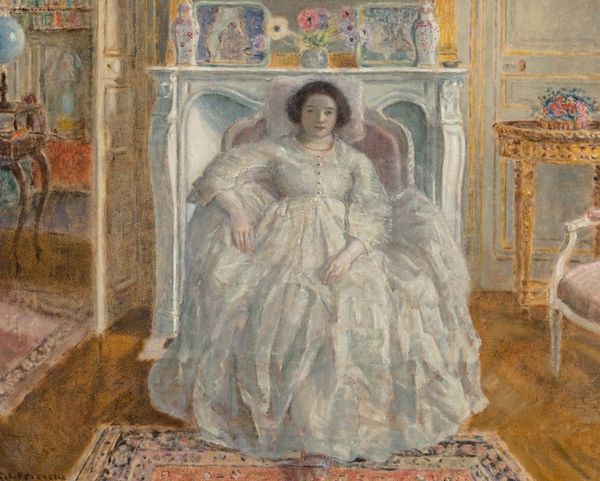
Copyright: Public domain
Editor: This is Childe Hassam’s "The Mantle Piece," painted in 1912. It’s oil on canvas, depicting a woman standing by a fireplace. I find the brushstrokes so interesting; they give the whole scene a hazy, almost dreamlike quality. What do you see in this piece, focusing on its visual aspects? Curator: From a formalist perspective, the power of "The Mantle Piece" resides in Hassam's mastery of composition and colour. Note how the vertical lines of the mantelpiece and the figure’s dress are juxtaposed with the more diffuse and broken colour of the surrounding space. Consider the restricted palette; the dominance of whites, yellows, and reds contributes to the painting's overall harmony, and how the artist balances cool and warm colors to create a subtle tension within the pictorial space. Have you also observed the artist's dynamic brushstrokes and their interplay with light and shadow? Editor: Yes, the way he uses the brushstrokes creates texture even where there probably isn't any. It makes the surface feel alive, not static. And I didn't initially think of it, but those restricted colours certainly contribute to the atmosphere. Does the placement of the subject, off-centre, mean something in particular? Curator: The off-center placement, coupled with her ambiguous expression, resists a straightforward reading. We are encouraged to see her as an element within a broader visual field rather than the primary focus. The figure seems both present and somehow absent, inviting contemplation on the nature of seeing itself. Editor: That makes sense! I guess I was too caught up in thinking about narrative instead of just the pure visual elements. Curator: Exactly. It is the arrangement of forms, colours, and textures that ultimately defines the painting's significance, leading us beyond representation to an appreciation of art as a self-contained visual language. Editor: That’s given me a lot to think about. I never really considered art from just its forms; the focus on color and the structural tension is truly eye-opening. Curator: Indeed, and that's just one perspective among many to interpret art’s complexities.
Comments
No comments
Be the first to comment and join the conversation on the ultimate creative platform.
